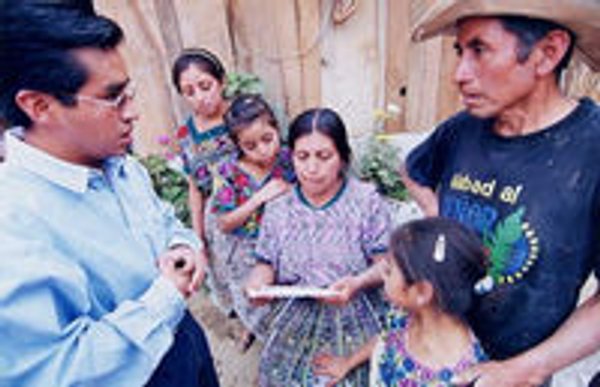In commemoration of Josemaria Escriva’s canonization on October 6, 2002, a group of people who follow his teaching in their lives want to offer him a service project, as a testimony of gratitude and as a concrete and lasting sign of his spiritual legacy: Aq’on Jay, an ambulatory surgery center and outpatient clinic in the Chimaltenango district.
Chimaltenango has almost half a million inhabitants but only one public hospital of about 50 beds. The private hospitals are too expensive for the region's subsistence farmers. In Chimaltenango, the low state of economic development and the lack of health care result in high rates of malnutrition and infant mortality and a very low life expectancy.

A real welfare center
Utz Samaj, which in the Kaqchikel language of the area means “Good Work,” is an initiative of the Foundation for Integral Development. Since 1995, this center has carried out various health programs – focusing mainly on preventive medicine – aimed at 180 communities in five townships of Chimaltenango. During this time, it has also trained dozens of midwives, health aides and teachers, and has opened 30 community pharmacies. And it has conducted more than 1500 medical examinations.
The new hospital, which will be called Aq’on Jay, words which mean “house of well-being” or “welfare center,” is a project of the promoters of Utz Samaj. Its purpose is to become the center of reference for the patients in the 180 villages already benefiting from the foundation’s health programs, who currently do not have access to health facilities due to their poverty.

In its first phase, Aq’on Jay will provide prenatal medical services, pediatrics, ophthalmology, odontology, internal medicine, X-rays, ultra-sound, a diabetes clinic and a clinical laboratory. It will also have units devoted to preventive medicine and nutritional education.
The ambulatory hospital will be located at the facilities of Utz Samaj, about five miles from Tecpan. This is a central point in the area, with the villages it plans to service an average of about nine miles away. Even so, since public transport is scarce and irregular, many of the patients will have to come by foot, which means an average of three and a half hours of walking. To help with this problem, Aq’on Jay will offer an ambulance service which will be coordinated by mobile phones distributed to community leaders.
How can high quality attention be provided at low cost? “The answer,” said Eusebio del Cid, former Health Minister of Guatemala and President of Aq’on Jay, “is to set up an ambitious trust fund, which is becoming a reality this year through the intercession of Blessed Josemaria, for we hope to inaugurate the first stage of Aq’on Jay in his memory and as a lasting commemoration of his canonization.”

Nevertheless, Aq’on Jay is still in part a dream. In its first phase the project will have a total cost of nine million quetzales ($1,125,000), of which two million ($250,000) will be used for construction and equipment, and seven million ($875,000) will form the trust fund. The plan is that the trust fund’s annual interest will provide the funds to operate the hospital.
Doctor Faillace, one of those involved in the project, points out that only 35 per cent of the ten thousand patients to be served each year at Aq’on Jay will be able to pay for their medical attention. The other 65 per cent will be subsidized by the interest from the endowment.
The Foundation for Integral Development hopes to obtain the nine million quetzales that it needs to begin the first phase of the project with private donations, some government financing, and assistance from international organizations and non-governmental entities. Presentation of the project to business people has begun to generate a positive response and a number of them have already pledged to help provide the trust fund.
The Foundation expects to reach its goal before the end of 2002 so that the hospital can begin operations next year. The members of the foundation are optimistic. “This is the dream that we have always had: to bring quality health service and hope for life to the needy, who have till now been excluded from access to medical attention,” said Dr. Faillace.
